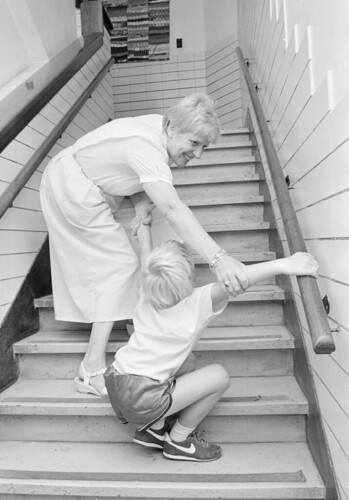This has been cross-posted from Through Global Lenses @wfc.

Photo courtesy of Flickr Creative Commons
Time to do a stocktake on what we’re learning here. Una and I smiled when the boys yelled out an enthusiastic ‘Yay!’ when she announced we’d devote the first half of the lesson to the Flickr project.
Looking around the room, I saw heads bent down to view photos and comments, unmistakable eagerness in reading, eyes darting about from comment to comment, fingers working at top speed to keep up with written responses.
Yes, but is this learning?
Just in case any of us started to think this was just chat – not that we would – I thought I’d take stock of the types of learning happening here.
First of all, I think it needs to be stated at the outset that engagement is a healthy precursor to any kind of learning. Although this project has clear guidelines and timeline with weekly themes and questions to answer, there are obvious reasons for the engagement we are seeing:
- peer audience
- global connections
- familiar ‘chat’ platform for communication
- ease of communication through Flickr comments setup
- transparency of all activity
- cultural curiosity
- natural desire to socialise with other young people wherever they are
As I’ve said previously, it’s a far cry from writing on a prescribed topic for the teacher. The themes and questions have been chosen to encourage sharing of background, passions, hobbies, etc., and the students want to write about themselves and their lives because it’s part of a natural desire to share these things in order to make meaningful contact with others.
Cultural curiosity sparks questions like ‘What is AFL?’ or ‘What is that fluffy thing?’ (dreamcatcher). The desire to connect is clearly demonstrated too – ‘I also love watching crime investigation shows’; ‘my parents are also the most influential people in my life’, etc.
The positive comments and encouragement the students give each other is good to see, and much more meaningful to them than any comments from their teacher. I find this heart warming, actually, and cling to it when I read all the negative press in the media about young people being bullied and abused by their peers online. I think we could organise more of these types of learning environments to bring out the best in our young people.
There’s much still to be discovered in this learning process, some of it related to the options within Flickr itself. For example, for now we haven’t too fussed about tagging or organising photos into sets. That will come, and some students will learn that themselves just by browsing the site. Then there’s the photographic aspect – so much to learn about the potential of a picture. Even within Flickr there is an editing button above the photo which takes you to Picnik where you can play around with the image. When students think about how they want to present their picture, what message they are trying to convey – this is visual literacy. I expect initially they will be focussing on satisfying the weekly theme, but later they may think about creative elements such as focus, colour, texture and so on. The potential for differentiated learning exists both visually and within the written text.
